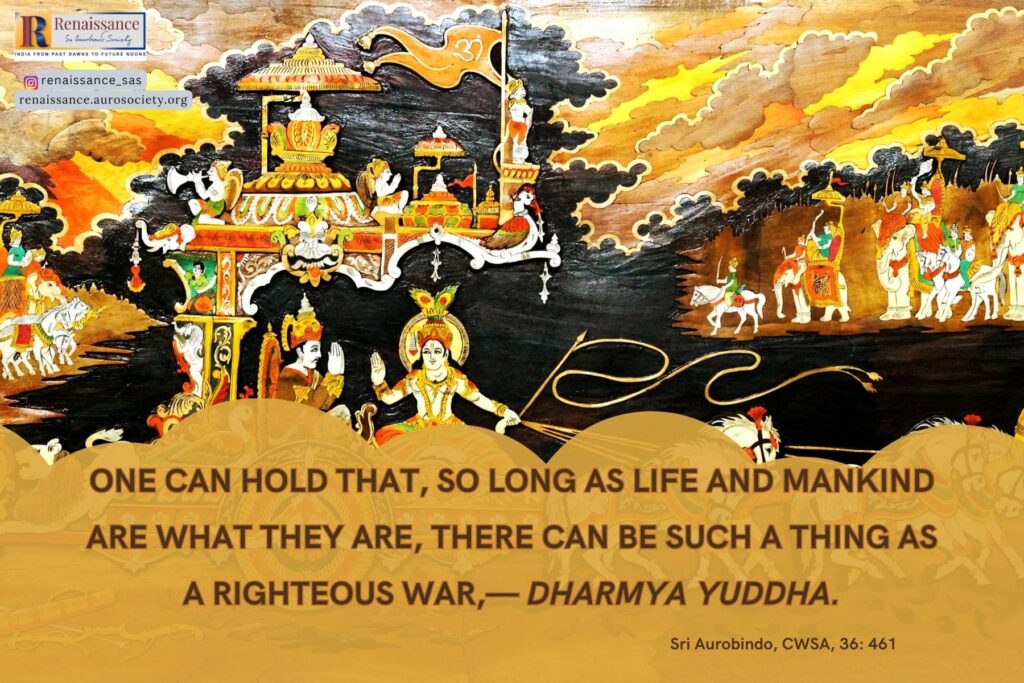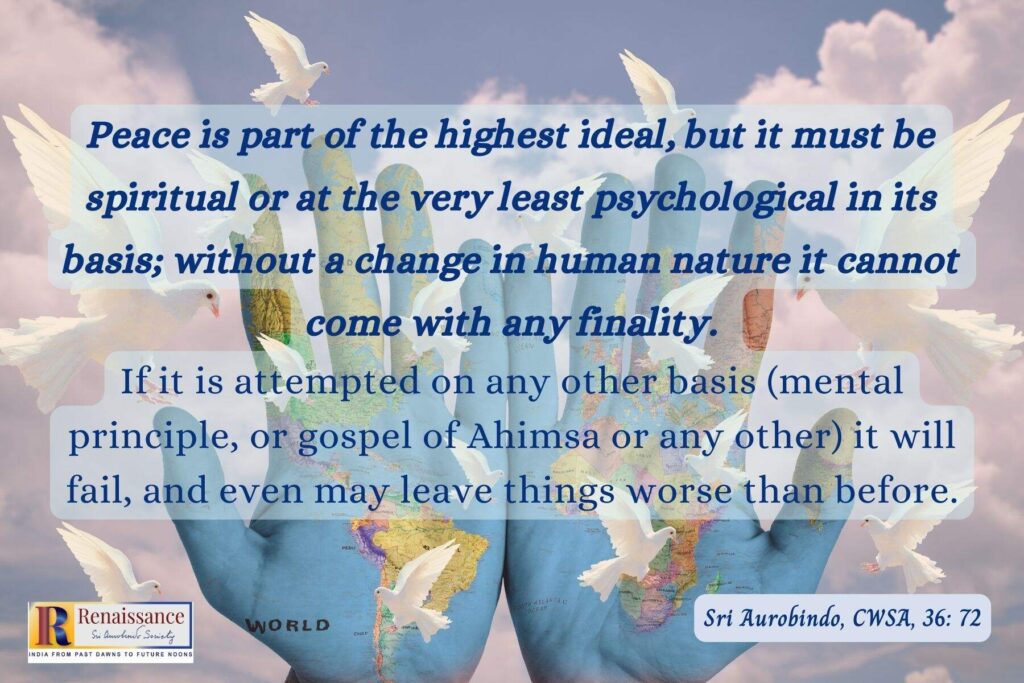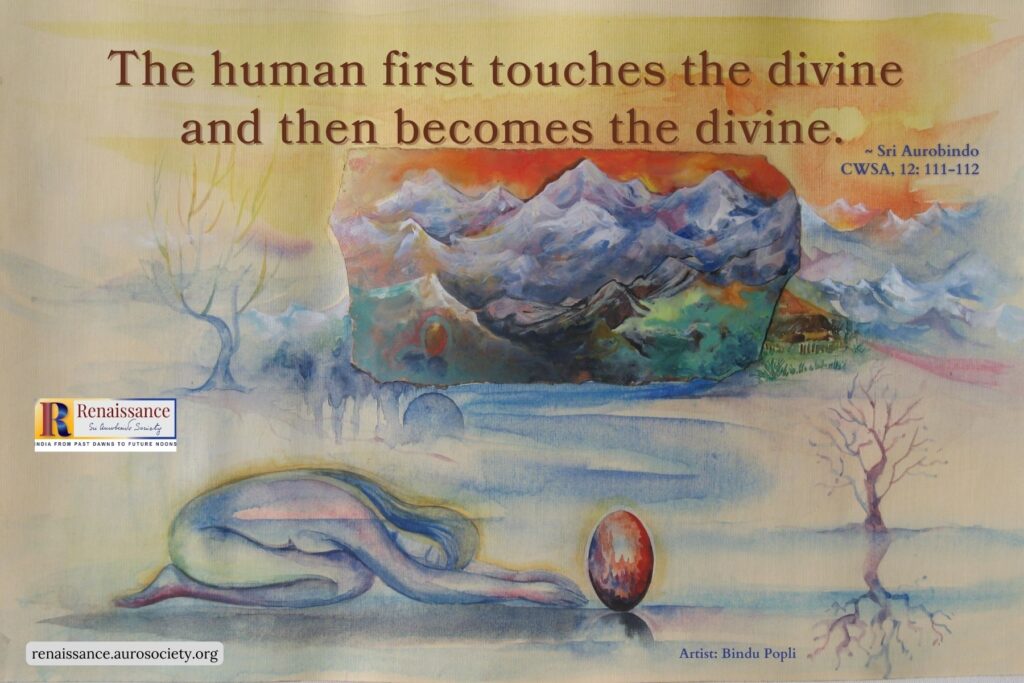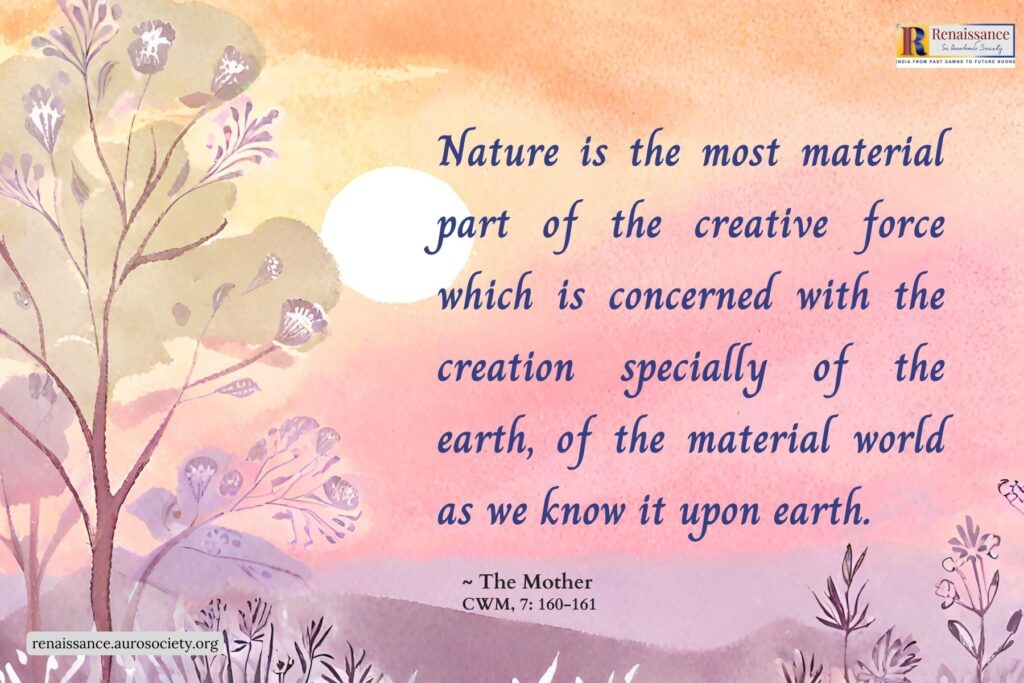Editor’s note: We feature a short piece by M. P. Pandit, titled ‘Violence’ which was first published in 1985 in Vol. 3 of the author’s series — ‘Commentaries on the Mother’s Ministry’. Apropos of this, we also include some remarks made by Sri Aurobindo on July 23, 1923 regarding the methods of Satyagraha and Ahimsa applied by Gandhi during India’s freedom struggle.

We are apt to be too hasty in our judgments. We treat some things as good, desirable and some as bad, condemnable. We do not pause to see if we are not going by surface appearances; we do not take pains to know how and why elements that we dub as evil have come to be. And why are they permitted to exist in this creation?
For truly nothing can exist in creation which is not allowed to be by the Divine. The Divine Will that rules and guides the universe is omnipotent and nothing can stand against it. If the Divine has permitted such things, say violence, to be a part of life there must be reasons for it.
We are certainly not living in an ideal world where all is based on harmony, understanding and unity. The world as it is is dominated by Falsehood in its several formations, Ignorance, Ego, Desire. Under these circumstances — provisional though they be — violence is inevitable. The anti-elements have their clout in force and it can be countered only by force. At any rate in the present organisation of the world, physical force can be met only by physical force.

Violence can be opposed only by violence. Evil cannot be put down except by putting down those who live by evil and for that purpose use of force, exercise in violence is inescapable. A stage is bound to come, in the course of our evolution in consciousness, when the factors that promote aggression will no longer be there. Naturally defensive violence will no longer be required then. Till that change in the ruling conditions comes over, counter-violence is not only justified but positively called for.
There are some who call for desistance from physical violence but advocate the use of moral pressure on the offending elements. But this is worse. For this moral exercise amounts to coercion, a subtle violence.
You force your will upon another obliging him to obey you. In thus forcing another to suppress his will and conform to yours, you are harming his soul. You constrict his freedom of choice in a more effective way and thus interfere with his evolution.
The effects of physical violence are temporary, those of moral violence more lasting. The resentment it builds up in another, the unwilling submission you enforce when you succeed, leave powerful negative vibrations in the atmosphere which will one day tell. They are going to rebound.
As a rule, subtler vibrations of this kind are more devastating than the normal emanations of physical violence. They harm both, the person who exerts the pressure and the one who is acted upon. Spiritually it is indefensible, psychologically it is criminal.


Sri Aurobindo’s Remarks on Gandhian Ahimsa
“I believe Gandhi does not know what actually happens to the man’s nature when he takes to Satyagraha or non-violence. He thinks that men get purified by it. But when men suffer, or subject themselves to voluntary suffering, what happens is that their vital being gets strengthened.
These movements affect the vital being only and not any other part. Now, when you cannot oppose the force that oppresses, you say that you will suffer. That suffering is vital and it gives strength. When the man who has thus suffered gets power he becomes a worse oppressor…
What one can do is to transform the spirit of violence. But in this practice of Satyagraha it is not transformed. When you insist on such a one-sided principle, what happens is that cant, hypocrisy and dishonesty get in and there is no purification at all.
Purification can come by the transformation of the impulse of violence, as I said. In that respect the old system in India was much better: the man who had the fighting spirit became the Kshatriya and then the fighting spirit was raised above the ordinary vital influence.
The attempt was to spiritualise it. It succeeded in doing what passive resistance cannot and will not achieve. The Kshatriya was the man who would not allow any oppression, who would fight it out and he was the man who would not oppress anybody. That was the ideal.”
(Evening Talks with Sri Aurobindo, recorded by A. B. Purani, third series, p. 290)
Sri Aurobindo has never concealed his opinion that a nation is entitled to attain its freedom by violence, if it can do so or if there is no other way; whether it should do so or not, depends on what is the best policy, not on ethical considerations of the Gandhian kind. Sri Aurobindo’s position (and practice) in this matter was the same as Tilak’s and that of other Nationalist leaders who were by no means Pacifists or worshippers of Ahimsa.
~ Sri Aurobindo, CWSA, Vol. 36, p. 73

~ Design: Beloo Mehra



